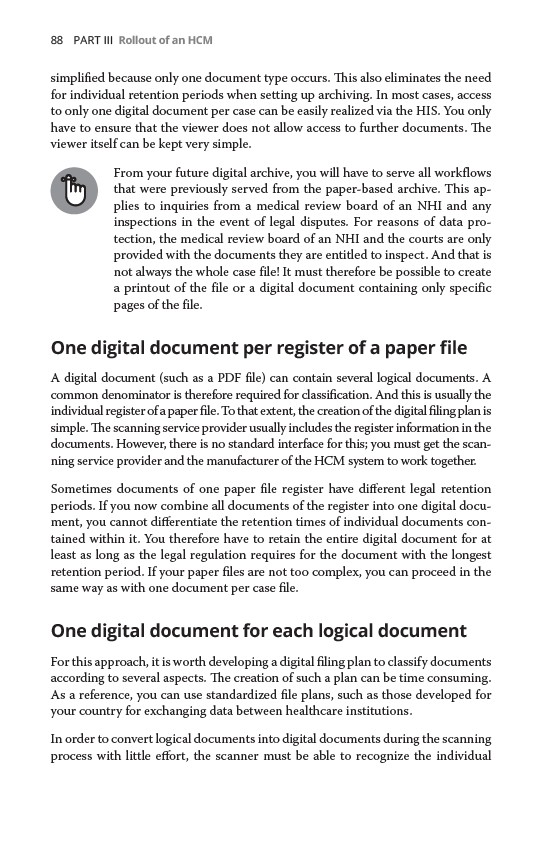
88 PART III Rollout of an HCM
simplified because only one document type occurs. This also eliminates the need
for individual retention periods when setting up archiving. In most cases, access
to only one digital document per case can be easily realized via the HIS. You only
have to ensure that the viewer does not allow access to further documents. The
viewer itself can be kept very simple.
From your future digital archive, you will have to serve all workflows
that were previously served from the paper-based archive. This applies
to inquiries from a medical review board of an NHI and any
inspections in the event of legal disputes. For reasons of data protection,
the medical review board of an NHI and the courts are only
provided with the documents they are entitled to inspect. And that is
not always the whole case file! It must therefore be possible to create
a printout of the file or a digital document containing only specific
pages
of the file.
One digital document per register of a paper file
A digital document (such as a PDF file) can contain several logical documents. A
common denominator is therefore required for classification. And this is usually the
individual register of a paper file. To that extent, the creation of the digital filing plan is
simple. The scanning service provider usually includes the register information in the
documents. However, there is no standard interface for this; you must get the scanning
service provider and the manufacturer of the HCM system to work together.
Sometimes documents of one paper file register have different legal retention
periods. If you now combine all documents of the register into one digital document,
you cannot differentiate the retention times of individual documents contained
within it. You therefore have to retain the entire digital document for at
least as long as the legal regulation requires for the document with the longest
retention period. If your paper files are not too complex, you can proceed in the
same way as with one document per case file.
One digital document for each logical document
For this approach, it is worth developing a digital filing plan to classify documents
according to several aspects. The creation of such a plan can be time consuming.
As a reference, you can use standardized file plans, such as those developed for
your country for exchanging data between healthcare institutions.
In order to convert logical documents into digital documents during the scanning
process with little effort, the scanner must be able to recognize the individual